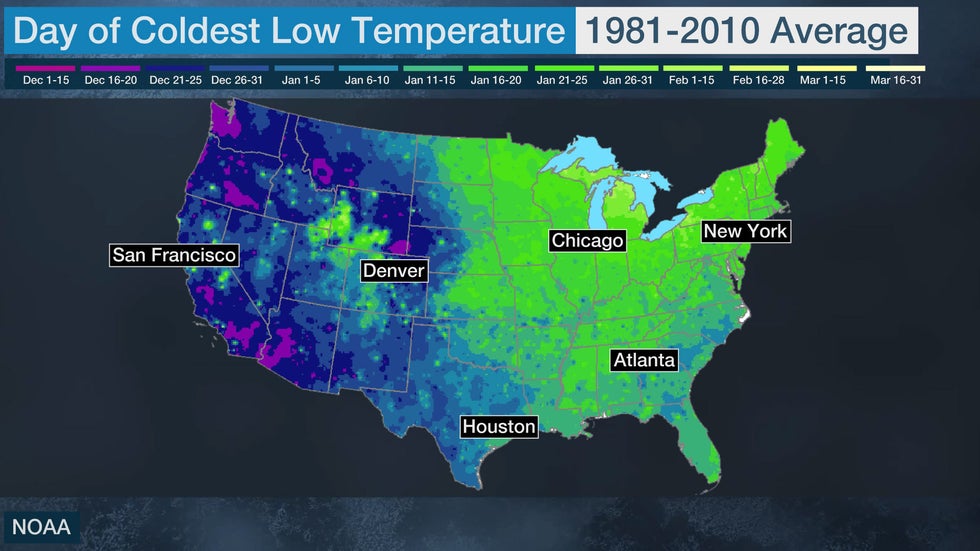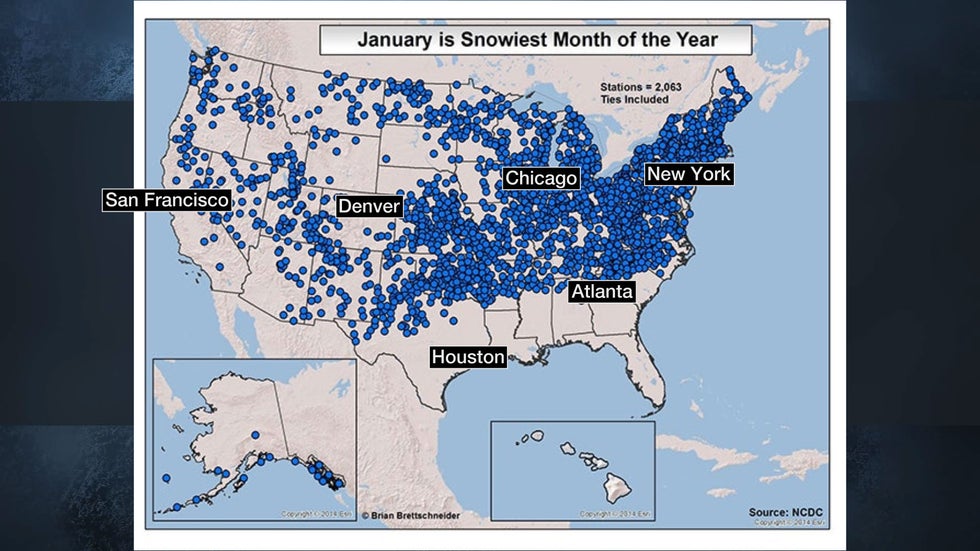
Winter's worst weather conditions can occur in multiple months, but for many parts of the country, January is usually the peak for cold and snow.
Coldest Time of Year
January, on average, is when the coldest day of year occurs in much of the eastern half of the nation and higher elevations of the Rockies. You can see this in the green and lighter blue shadings on the map above, which show the date of the coldest average low temperature (1981-2010 average).
NOAA said the reason for this is due to the increased snow cover in the East, as well as in the Rockies. Increased snow cover reflects sunlight, keeping ground temperatures colder.
January is not the peak cold time of year for every location in the Lower 48. For example, the coldest average low temperature occurs in mid-December in the Pacific Northwest, Southern California and southwestern Arizona.
Snowiest Month
January's cold also makes conditions ripe for many cities to have their snowiest month.
Alaska-based climatologist Dr. Brian Brettschneider examined monthly snowfall data from 4,218 observation sites across the United States that receive an annual average of at least 2 inches of snow.
January was the snowiest month for nearly 50% of those stations. This includes locations plotted in blue below from the Northeast to the Midwest, mid-South and parts of the West.
At some stations in each of those regions, December or February are snowier.

The increasing potential for major East Coast snowstorms adds to January's snowy reputation.
Late January is historically when the frequency of winter storms attaining a Category 3 or higher rating on the Northeast Snowfall Impact Scale (NESIS) occurs, according to NOAA's National Centers for Environmental Information.
The NESIS scale ranks East Coast winter storms Category 1 to 5. In general, widespread heavy snowfall over highly populated areas produces a higher NESIS value.
Seven of the 34 storms ranked Category 3 or higher on the NESIS scale were in January's final two weeks. That's the second most for any of the two-week periods shown below for the years spanning 1956 to 2018. February's first two weeks have the most with 12 such storms.

The Weather Company’s primary journalistic mission is to report on breaking weather news, the environment and the importance of science to our lives. This story does not necessarily represent the position of our parent company, IBM.
The Weather Company’s primary journalistic mission is to report on breaking weather news, the environment and the importance of science to our lives. This story does not necessarily represent the position of our parent company, IBM.

No comments:
Post a Comment